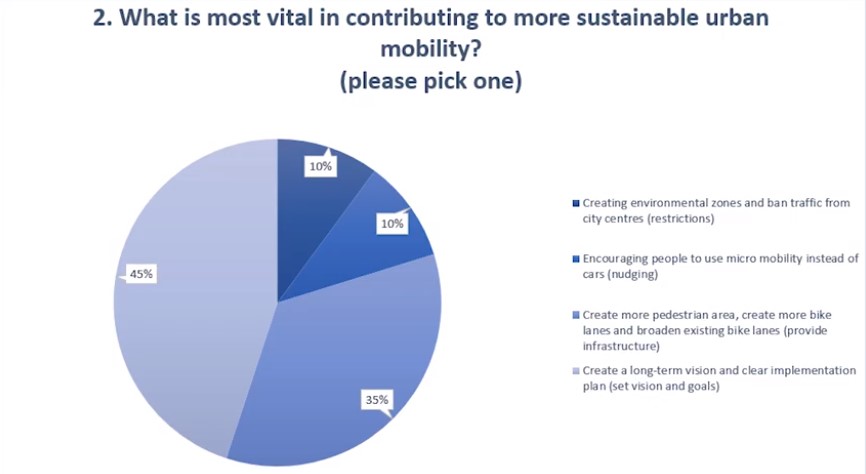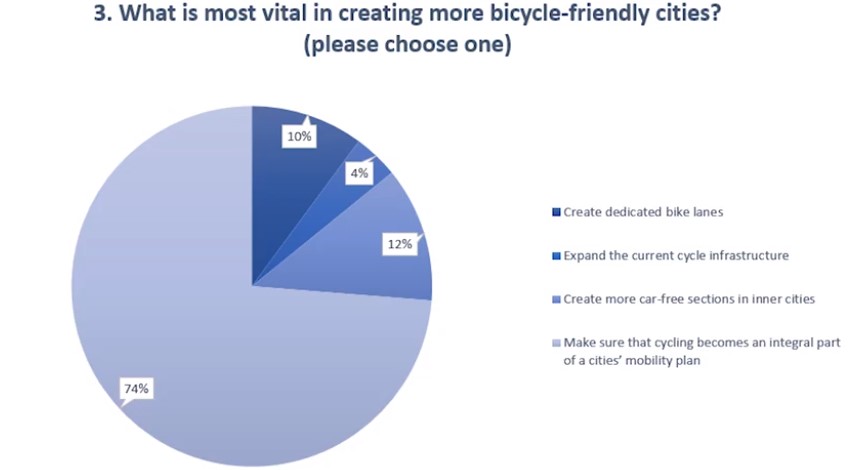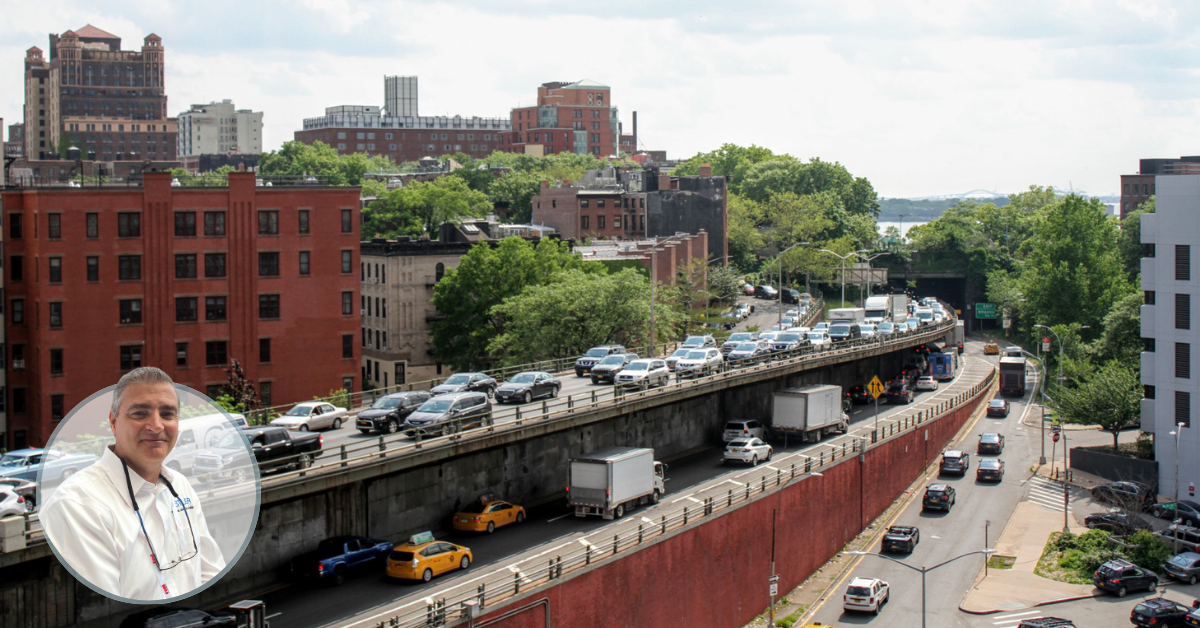Top 5 takeaways Intertraffic webinars 2020
2020, what a year it has been, the onset of the COVID pandemic, no b2b in-person events, impact on mobility, new set of challenges. In 2020, we have shared knowledge online with a variety of monthly webinar sessions covering all those mobility challenges. Here are the top 5 take aways in a nutshell. Missed any or want to rewatch? Check out all the 2020 editions here!
1) The path to automated driving seems to be getting shorter
Safer. Cheaper. Better. Time-saving. The path to automated driving seems to be getting shorter by the day…61% of our webinar viewers think automated vehicles are way too expensive for the average traveller. The discussion continued at the December webinar.
Eindhoven University’s Marieke Martens speciality is the relationship between humans and machines, in this case autonomous vehicles of varying levels of autonomy. ‘Autonomous vehicles need to be able to adjust their behaviour in traffic to replicate the behaviour of human drivers, citing that AVs need to ‘socialise’ with regular traffic. The alert, well-skilled driver is the goal,’ she concluded.
Marieke’s initial point was very telling – 40% of car dealerships across Europe lack basic information on the AV options they are selling and drivers don’t understand what their cars are capable of due to “confusing terminology.” Also, the AV community could potentially struggle for mainstream acceptance as people still enjoy driving.
Rik Nuyttens (3M) dove into the detectability and the potential uses for AVs. ‘Fully autonomous personal cars are probably going to be too expensive for a long time but where they come into their own is doing driving jobs where there is a real shortage of labour. Over time an autonomous bus taking someone from their car to a hospital building is going to be cheaper than employing a driver.’
2) Speeding up the mobility transition for public transport and MaaS
“Who has touched my shared bike? Who has sneezed in this taxi? Who has touched the door handles?” Aurelien Cottet of Transdev wondered. How will confidence be restored? By reducing mass transit capacity. But, he asked, who is going to pay for buses to be redesigned or for trams to be repurposed to allow for social distancing measures to remain implemented? By making transit demand-driven and, perhaps, using smaller buses more frequently.
Cottet explained in the April webinar that an initial reluctance from some MaaS subscribers to pay for their mobility subscriptions using their smartphones could well be an unexpected by-product of the virus as cash becomes increasingly less attractive a proposition.
“We might have a total demand-driven public transport system where people have to book their seat via MaaS”
In this webinar Paul Speirs (PTV) mentioned he thinks most people will go back to normal after COVID-19. Cottet believes that it will take anywhere between 12 and 18 months for the public’s trust in transit modes to return so suggests that this is where MaaS can come into its own and offer both public and private modes on the same platform.
3) Digital infrastructure should cater for more data flows
During the November webinar participating experts agreed that measuring traffic flow and making use of data is key to keep track of the crowds during a time of pandemic. 5G will help create a better connected future. Although this might take some time before all of us will find those privileges.
Infrastructure has changed a lot since the outbreak of the pandemic. Cities have created cycle lanes (from existing parking spots or roads). The chance to contribute to a better life in the city. For most cities the agenda of mobility targets involves:
- limiting of vehicular traffic,
- optimising travel times,
- providing relevant data (where less is indeed more),
- improving modal split (and therefore providing more readily available options) and
- to communicate with your citizens.
Christoph Seybold of Kapsch TrafficCom insisted that a combination of sufficient warning of planned and unplanned events and the smart use of existing and new data can play a significant role in assistance cities to achieve their mobility targets.
Want to know more about intelligent infrastructure and smart traffic control? Join Intertraffic ON AIR."
The first two episodes take place on the 20th of April.
4) Traffic congestion and sustainable urban mobility
What will the impact of COVID-19 be on traffic flows? What will change in terms of traffic management? How will cities and traffic technology exponents respond to the changing traffic situations and the new demands on mobility? What kind of smart solutions do you have in store that can get us through this next phase of what will hopefully be post-Corona world?
During the webinar of May we asked the audience the following question: In Corona times cities are temporarily changing their mobility infrastructure to cater for more cyclists and shared services. What is your opinion about these measures? 48% of the people answered: Great, this should be permanent. 19% thought it to be great, but only temporary.
And in the next webinar on sustainable urban mobility the following poll questions were asked and answered.


So cycling or pedal power can be seen as the holy grail for traffic congestion. However, we need to develop smart measures to monitor traffic congestion. As Max Eichhorn of Siemens explained: ‘There are currently no tools that support cities to actively manage the demand of the infrastructure, changing travel behaviour and the throughput in a way that strategic KPIs like air quality, traffic flow or safety can be achieved. Cities do not know if the already defined rules are respected. A new system allows cities to regain control over six vital factors: mobility transparency, fast response to irregularities and incidents, employ higher levels of automation in traffic and mobility management, set rules and gain control over all mobility providers, influence individual travel and freight decisions to maximise network capacity and finally to minimize human and environmental harm.
5) The customer parking experience and smart kerbside management
With a huge increase in the numbers of people working from home, changes in residential parking requirements are also being closely monitored.
In the June webinar on smart parking Julian O’Kelly of the British Parking Association explained: ‘These enforced behavioural changes will result in the need for more residential parking balanced against the need for social distancing and adequate footways and cycle lanes, not to mention parking facilities for bikes," he maintained, highlighting a Danish initiative to stagger school and work start times to counteract the effects on traffic patterns.
SKIDATA’s Florian Schneeberger mentioned: “On the one hand the efforts to digitalise the parking industry have been ramped up, there’s no doubt about that,” he said. “And on the other the need for safety and security has increased together with the move away from cash and anything you have to touch.”
Ben Boutcher-West of AppyWay, described parking as “failed mobility”, but his tongue-in-cheek comment was tinged with seriousness as he opined the virus’s side-effect of taking up valuable parking spaces with “static cars”, blocking much-needed access to the city and preventing health workers and key deliveries from being able to park close to their intended stop.
He insists that with home goods deliveries across Europe increased by up to 70% since the introduction of the lockdown restrictions but with large numbers of those deliveries being made by vehicles that have no choice but to double-park, that the penetration of digital services cannot come quickly enough. “We’re talking of a return to normal at some point but we should, as a sector, be embracing the changes that this pandemic has brought about.”
Boutcher-West firmly believes that the COVID-19 crisis has accelerated the momentum towards smart kerbside management and in particular the automation of the kerbside. “We need to harness the basics of supply and demand in one simple platform that is ultimately hosted by government who, after all, own the kerbside we’re talking about.”
From MaaS to PaaS and MaaX
CEREMA’s study director, Peggy Mertiny is also of the opinion that parking is, or at least should be, an integral part of Mobility as a Service (MaaS) and that the Coronavirus restrictions may have actually propelled the notion of PaaS (Parking as a Service) further than it otherwise might have been.
MaaX allows its users to organize their trips in Île-de-France thanks to the integration of a dozen mobility service providers offering public transport, carpooling, car-sharing, self-service scooters and bicycles, motorbikes and, crucially, parking, etc.
Thierry Brusseaux of Flowbird highlighted the increasing pressure on curbspace in Europe. ‘Faced with the challenges posed by the evolution of urban spaces and their densification, cities must constantly adapt to their citizens ever changing needs,” he says, and the bringing together of the best of both physical and digital solutions is certainly one way to address the issue. Hence phygital, an amalgamation of open payment and account-based digital ticketing, and differentiated tariffs for curbside management, digital tickets, mobile payment and bank card payment.’
Share your story
Do you have an innovation, research results or an other interesting topic you would like to share with the professionals in the infrastructure, traffic management, safety, smart mobility and parking industry? The Intertraffic website and social media channels are a great platform to showcase your stories!
Please contact our Sr Brand Marketing Manager Carola Jansen-Young.
Are you an Intertraffic exhibitor?
Make sure you add your latest press releases to your Company Profile in the Exhibitor Portal for free exposure.
Get up to speed on the mobility industry - our newsletter straight to your inbox!








